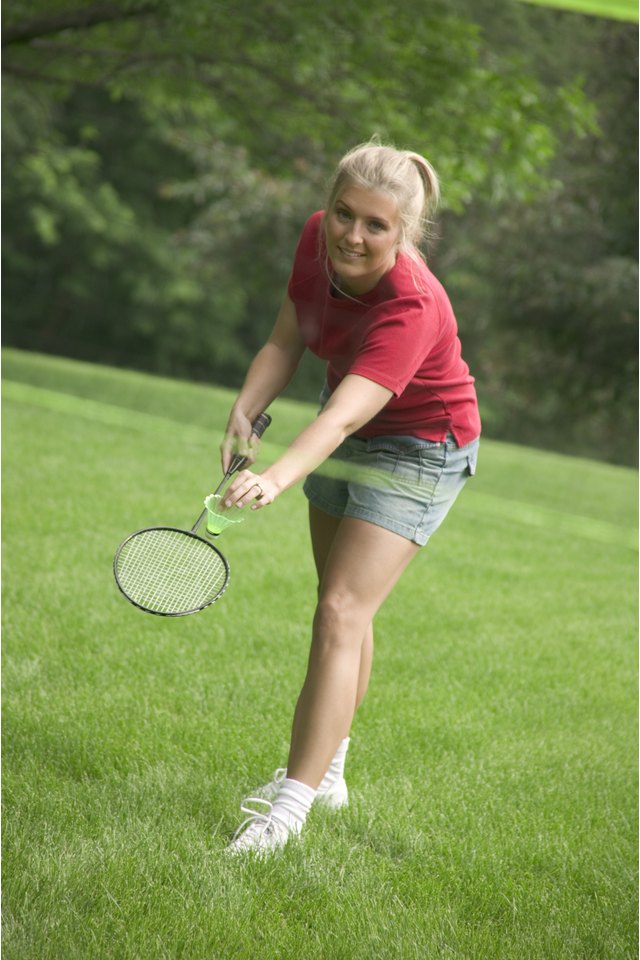Rules of Speedminton

Speedminton is a fast-paced sport; this combination of badminton, squash and tennis is the creation of German inventor Bill Brandes. Brandes initially called the game shuttleball, but in 2001, the game was renamed speedminton. Unlike badminton, the speedminton court doesn't have a net dividing it and requires a heavier shuttlecock, called a speeder. The game can be played by two or four players and can easily be set up in your backyard, on your driveway or at the beach.
Court Layout
A speedminton court consists to two, 18-foot square boxes, 42 feet apart. You can mark the corners of each box with a cone or buy a speedminton kit with marker lines. The lines can be anchored into the ground for outdoor play. If you play indoors, the lines can be taped to the floor at the corners to keep them in place.
Equipment
Speedminton rackets are 23 inches long and similar to squash rackets. Beginners typically play with rackets make of aluminum while advanced players use rackets made of 100 percent graphite. There are four different types of speeders. The Fun speeder is designed for recreational players. This speeder can reach speeds up to 160 mph. The Match speeder is designed for competition play and advanced players. It can reach speeds up to 175 mph and is reasonably stable in light winds. The Night speeder is designed with a glow-in-the-dark light in its head for night play. The Cross speeder can reach speeds up to 300 mph and is the most stable in windy conditions.
Serving
Toss a coin to determine who serves first. The serve alternates between players after every three serves. You can serve from anywhere inside your square or behind the back boundary line. When serving from inside the square, you must hold the speeder at hip height, let it drop below your hip and contact it with an underhand motion before it hits the ground. When serving from behind the back line, you are allowed to serve with an overhand motion. A point is awarded with each serve. If the game becomes tied at 15 points, the serve alternates after every point. The player who loses the game serves first in the next game.
Match Play and Scoring
A typical speedminton match consists of the best of five games. Each player defends his square to keep the speeder from landing on the ground or floor. When one player has scored 16 points with a margin of two, he wins the game. If the game score becomes tied at 15 points, play continues until one player has a two-point lead. If your opponent commits a service fault, allows the speeder to touch the ground in his square, hits the speeder outside the boundaries, makes body contact with the speeder or hits the speeder twice, you are awarded a point.
Changing Sides
Players change squares after each game. This makes it fair to both players in the event you are playing in windy or sunny conditions. If a fifth game is required to break a tie in games, players change squares after one player has won eight points.
Doubles
Two adjacent courts are used to play doubles. The courts are butted up next to each other and share a side boundary line. Once the first serve has been decided, one team member serves three times and then the serve goes to the other team. The serve always goes diagonally across to the opponent's square. The first of the three serves must be delivered from the right square. After the point, the same server switches to the left square and serves diagonally from left to right. The last serve is delivered from the right square. After a serve has been returned, players are allowed to move freely between their two squares. All other speedminton rules apply.
